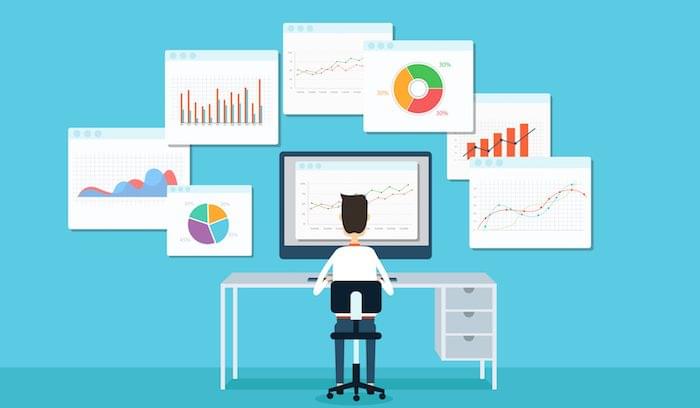What is Predictive Analytics and How Does it Help Decision Makers
Predictive Analytics or the technological tool that combines AI or Artificial Intelligence, Big Data, and Analytics software is taking the world by storm.
Not a day goes by without reading a report about how Predictive Analytics helps in predicting outcomes with uncanny accuracy.
Right from predicting how consumers behave to predicting when people will die, predictive analytics is the future of decision making in the Digital Age.
Moreover, predictive analytics can also be used by business leaders and decision makers in making better decisions as well as in mapping outcomes to goals and objectives.
Indeed, the power of predictive analytics lies in the way it helps decision makers to evaluate whether a particular option would achieve the desired outcomes.
It also helps Human Resource Managers to make better hiring decisions as well as helps them in deciding which training method and training program is the best suited for actualizing the business goals.
Moreover, predictive analytics also helps HR managers in mapping such outcomes versus goals using tools such as HR Scorecard and the like. Thus, predictive analytics can be game changer as far as HR decision making is concerned.
Predictive Analytics in Hiring
Hiring is usually a cumbersome task where without the use of technology HR managers would have to sift through hundreds of resumes and also use informed guesses as to how a particular candidate would fare as far as matching the resume with the desired job profile is concerned.
Apart from this, manual hiring processes are prone to be subjective and dependent on the whims and fancies of the recruiters and the interviewers.
On the other hand, using Predictive Analytics, HR managers can make accurate decisions regarding whom to hire and whom to reject.
Indeed, using this software, HR managers can run through all the resumes and determine Best Fit models so that only those candidates whose profiles closely match the job description are selected.
Moreover, predictive analytics can also help HR managers in avoiding and rejecting those resumes with misleading and inaccurate information thereby nipping in the bud resumes that are full of fake qualifications and experience.
Indeed, hiring is the specific process where predictive analytics makes the most value addition as far as HR processes are concerned.
Take any report on predictive analytics and chances are that it would have sections on how this technology is a game changer as far as hiring and HR management is concerned.
We Must Be Masters of Technology Rather Than Being Its Slaves
Having said that, it is also the case that undue importance and excessive reliance on predictive analytics is not desirable for some reasons that would be discussed in this section.
Predictive Analytics is akin to colour blind hiring wherein both aim to reduce or eliminate the chances of bias and human prejudice in hiring decisions.
Thus, used properly predictive analytics can help actualize a truly Equal Opportunity paradigm wherein HR managers can proudly claim that they do not discriminate on the basis of any marker of identity and where merit is the only consideration.
However, recent reports indicate that Predictive Analytics also can be programmed in a biased manner and this is where some experts worry that excessive reliance on this technology can lead to some biases and errors creeping in the process.
Moreover, bankers and hedge fund traders who used predictive analytics models in the run up to the Great Recession of 2008 were shocked to see how their models failed to predict the recession and were alarmed to see their models not working at all.
This is where HR managers too must learn the right lessons and use predictive analytics in conjunction with human decision making.
Using Technology Along with the Human Element
On the other hand, the United States is already ahead of the curve as far as HRM and Predictive Analytics are concerned.
Right from Robots conducting interviews to using completely automated recruitment processes, the US has taken a lead in adopting predictive analytics for hiring processes.
Moreover, predictive analytics used in conjunction with the HR scorecard can help HR managers map outcomes to objectives and to help they prepare reports or scorecards on how they have fared as far as goals and objectives are concerned.
Indeed, predictive analytics can be used for everything from resume selection to software driven psychometric testing and technical tests to helping the final recruitment decision.
As mentioned in the previous section, the human element must also be used so that the Gut Feel factor of decision making complements and supplements the technology driven decision making.
Apart from this, the selected candidates career progression and career path in the organization can be used to evaluate whether he or she was indeed the right choice for the job.
In other words, future iterations of the software can benefit from hindsight mapping as far as hiring choices are concerned which adds value.
Not Lead To Dystopia
Lastly, predictive analytics is still in its infancy as far as realizing its Godlike powers of prediction are concerned.
Thus, future HR professionals might very well have to reckon with it subsuming humans completely and hence, would have to contend with playing second fiddle or even find them totally redundant.
This can have both positive and negative implications and it is the collective choices we make today that would determine how much the HR profession would be impacted by the onward march of technology.





